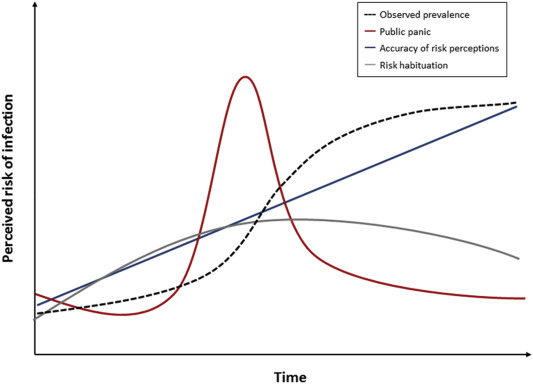**Comprehending ‘Behavioural Fatigue’ Amid Epidemic Contexts**
The notion of ‘behavioural fatigue’ attracted significant focus as it initially influenced the UK Government’s decision to postpone stringent public health interventions during the COVID-19 crisis. Although it was swiftly set aside as streets cleared in response to containment efforts, the concept has persisted as a vital topic as people globally strive to uphold essential behavioural adjustments that prioritize public health.
While an article in The Guardian suggested a lack of scientific backing for ‘behavioural fatigue,’ a deeper investigation uncovers a complex array of studies that examine changes in public compliance throughout outbreaks. Particularly, numerous studies have observed variations in compliance rates, typically associated more with shifting risk perceptions than with genuine ‘fatigue.’
A well-recognized model of risk perception in epidemics indicates that initial increases in perceived threat encourage heightened preventative actions. Over time, familiarity with a continuous danger may alter perceptions, leading to reduced compliance despite escalating actual risks. This phenomenon was illustrated in various studies concerning the 2009 H1N1 flu outbreak across regions like Italy, Hong Kong, Malaysia, and Mexico, exposing differing levels of diminishing compliance with social distancing and other precautionary actions.
Quantitative analyses of behavior, including shifts in television consumption or missed airline flights during the 2009 outbreak in Mexico, also corroborated trends suggesting less adherence as outbreaks progressed.
While numerous studies emphasize a drop in the enforcement of precautionary measures over time, some research highlights environments where compliance steadily improved. For example, investigations in the Netherlands and Beijing showed strong maintenance of low-effort health practices and, occasionally, increased participation in high-effort precautions such as mask usage.
The discourse surrounding ‘behavioural fatigue’ highlights the intricate relationship between epidemic dynamics and public behavior. Its importance resonates not just within health policy debates but also in mathematical modeling and strategic decision-making processes, reflecting varied disciplinary interactions with the issue.
The insights from this discussion are twofold. Scientists must proceed with caution when making public statements, especially in crisis situations where their impact is amplified. The intricacies of scientific disciplines often necessitate thorough investigation before taking definitive stances. For the general public, it is crucial to sustain vital health practices even as extraordinary situations become commonplace. Historical insights demonstrate that unwavering commitment has previously curbed the spread of disease, showcasing the life-saving power of consistent public behavior.
By precisely understanding and articulating these dynamics, societies can more effectively confront current and future health challenges, ultimately protecting not only individual health but also the overall well-being of the global community.
